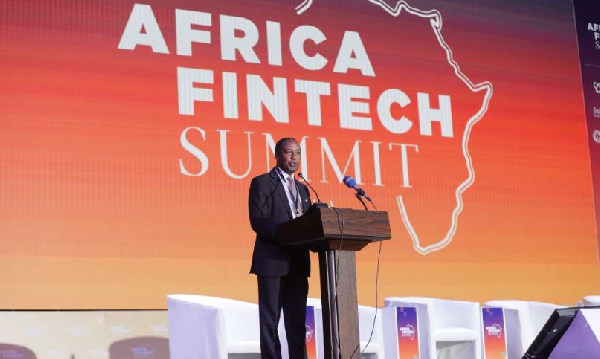From Likes to Laws: Can Kenya Balance Social Media Innovation with Regulation?
Since the historic Gen Z protests in Kenya in 2024, there have been increasing calls to regulate social media in Kenya. The most recent was the Labour Day speech by the Secretary General of the Central Organisation of Trade Unions (Kenya), COTU (K). This is a changing attitude from the disregard and contempt that leaders had for citizens using social media to voice discontent on key national issues.
Social media has radically reshaped how identity, gender, work, relationships, and community are understood. In Africa, this transformation often clashes with long-held cultural norms. For instance, the traditional respect for elders can conflict with the digital world’s flat hierarchy—where a 20-year-old influencer may command more public attention and social capital than a 60-year-old.
A walk through Nairobi CBD on a Saturday or Sunday afternoon reveals dozens of Gen Z content creators filming dance and choreography videos. A decade ago, this would not have been considered ‘work’. At the time, dance was mostly reserved for cultural functions—village ceremonies, weddings, and rites of passage like circumcision. Today, it has evolved into a digital livelihood. Once these videos are posted on platforms like TikTok or Instagram, they can generate income based on viewership. In this new economy, social media has not only created new careers—it has fundamentally redefined what we call work.
The printing press and stagnation in the Middle East
But regulation is a slippery slope, especially where the objective is self-serving or preservation.
In his book Rulers, Religion, and Riches: Why the West Got Rich and the Middle East Did Not, Jared Rubin writes about how Sultan Bayezid II in 1485 and his successor, Selim I, in 1515, issued edicts banning the use of printing presses for Ottoman Turkish and Arabic scripts under penalty of death.
All because the Ottoman Empire’s elite feared losing control over knowledge dissemination and political messaging, & thus the printing press would weaken their societal influence.
The Ottomans’ ban on the printing press for over 250 years after its invention in Europe is one of the great missed opportunities of economic and technological history. In Western Europe, the press provided a host of new financial and educational resources. Helping the West take a technological and economic lead that persists to this day.
When industrialisation and scientific advancement accelerated in Europe (partly fuelled by widespread literacy and books), opportunities that were simply unthinkable before the press, the Ottomans were left behind.
By the 19th century, the empire could not compete intellectually or technologically, partly because its decrees had stifled literacy and innovation for centuries.
Bridging Cultural Values & Innovation
In Western society, where they have normalised change as inevitable—even if it erodes traditional values, this is not a challenge. However, in African society, we are more sensitive to preserving culture, and tech is often seen as a potential threat to moral, religious, and communal foundations.
In Africa, value systems are often deeply communal, generational, and spiritual. However, most technology is usually imported, not locally originated; thus, its rapid adoption makes it more of a disruptor than an extension of our existing culture. It tends to collide with, rather than evolve from, these deeply rooted communal, religious, and traditional value systems.
In Western societies, this is not a challenge. Here, change is often viewed as inevitable—even at the cost of traditional values. Cultural norms are fluid and frequently shaped by market forces, including the influence of tech platforms. Technology is seen as a driver of individual freedom, efficiency, and progress and is quickly embraced across all areas of life: health, education, politics, religion, and relationships. As a result, cultural values tend to evolve alongside technological innovation.
In contrast, African societies are more sensitive to preserving cultural identity. Our value systems are deeply communal, generational, and spiritual—shaped by tradition, not trends. Yet, the technology we adopt is rarely homegrown; it is often imported and rooted in contexts that differ from our own. Because of this, its rapid adoption can act as a disruptor rather than an enabler. Instead of evolving from within our value systems, technology tends to clash with the moral, religious, and communal foundations of African life.
Therefore, as a country (Kenya) & continent (Africa), we need to separate these two core arguments, one of innovation and the other of values or culture.
Integration, Not Replacement: An East Asia Approach
In the years that I travelled through & lived in East Asia, I observed that they have managed to achieve a high technology adoption but maintained their cultural anchoring.
East Asia is among the most technologically advanced regions globally, with strong innovation in AI, robotics, and smart infrastructure. Despite this advancement, traditional values—like filial piety, respect for elders, collectivism, and social harmony—remain deeply entrenched. Similar to African cultural foundations, where family, community, and spirituality are paramount.
What is the difference in their approach? The East’s focus is to integrate rather than replace.
For example, in South Korea, on KakaoTalk (Korea’s homegrown WhatsApp equivalent), the honorific language is used, such as stickers or emojis. The app uses polite forms of speech in system messages, which aligns with Korean culture, where language shifts based on age.
In China, Douyin, which is TikTok’s China version, despite being owned by the same company (ByteDance), has different approaches for the China version & the international application. With regards to the content strategy, user age limits, algorithm values, purpose and cultural integration.
In China, Douyin’s purpose is to serve as a tool for nation-building and cultural reinforcement. Thus, its algorithm encourages “positive energy” content aligned with government priorities. Which is deeply rooted in Confucian, educational, and collectivist values. Promoting educational, patriotic, skill-based, and morally uplifting content (e.g., science experiments, stories of model citizens, cultural education).
While minors under 14 are limited to 40 minutes of use per day and only allowed to access it between 6 am and 10 pm.
Internationally, TikTok’s purpose is to serve as a commercial platform for global user engagement and monetisation. Thus, its algorithm optimises for attention and virality, often with no cultural or ethical gatekeeping, which attunes to the Western digital culture of individualism, self-expression, and open content loops. Prioritising entertainment, trends, viral dances, pranks, and highly algorithmic engagement loops. It has no age restrictions for children globally as it does in China. Instead, the app design encourages prolonged use, especially among teens.
China has drawn a strict line between its internal digital ecosystem and what it exports. This bifurcation allows East Asian countries to preserve their values and shape citizens while leveraging global platforms to compete for international influence, especially over young minds in other societies.
A Strategic Kenyan Approach
Therefore, as a country, the government plays an active role in shaping how technology is introduced and monitored through regulation. Not just for economic gain but for social cohesion, to ensure it aligns with national values such as China does.
Kenya must shift its focus to an approach of strategic investment in indigenous technology. Similar to how countries like China, South Korea, and Japan have nurtured local tech champions (e.g., Huawei, Alibaba, Samsung, Naver and SoftBank).
Creating a conducive environment where we build domestic capacity. Such as education systems that blend both worlds. East Asian education instils both technological fluency and deep cultural literacy, allowing citizens to engage with modern tools while grounded in tradition.
Thus, we can retain control over how technology is developed and used—ensuring cultural and political alignment.
This allows us to have culturally aware innovation akin to how many East Asian platforms are designed with cultural norms in mind—from honorifics in language to hierarchical structures in user interfaces.












